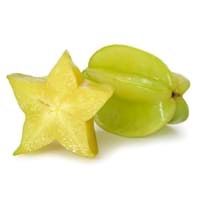Health Benefits
Cancer prevention, Heat stroke treatment
Asthma treatment, Cancer prevention, Controls blood pressure, Digestive aid, Heart care, Maintains hormonal balance, Regulation of heart rate, Skin cleansing, Skin rejuvenation
General Benefits
Anti oxidant properties, Anti-inflammatory properties, Digestive aid, Maintains healthy cholesterol level, Treatment of sore eyes
Boosts immune system, Controls blood pressure, Digestive aid, Eye care, Maintains healthy cholesterol level, Strengthens bones
Skin Benefits
Anti-aging benefits, Heals sunburn, Skin rejuvenation
Hydrates skin, Reduces wrinkles, Treatment of dark spots, Treatment of skin diseases
Hair Benefits
Promotes longer and healthier hair, Protects hair
Good conditioner, Regulates hair growth, Rejuvenates scalp, Softening mask, Treatment of dandruff
Allergy Symptoms
NA
Abdominal cramps, Anaphylaxis, Breathing difficulty, Diarrhea, Itching of mouth, Itching sensation in throat, Swelling of mouth, tongue or lips, Vomiting, Wheezing
Side Effects
Nausea, Vomiting
Dizziness, Headache, Nausea, Vomiting
Best Time to Eat
As a snack in the late afternoon, Eat the fresh ones, avoid mixing with any other foods, don't eat after meal., Strictly avoid empty stomach
Best if taken as a breakfast (or empty stomach), As a snack in the late afternoon, Don't consume at night and before bed, Eat the fresh ones, avoid mixing with any other foods, don't eat after meal.
Vitamin B5 (Pantothenic Acid)
Vitamin C (Ascorbic Acid)
Vitamin K (Phyllochinone)
Phytosterol
Not Available
Calories in Fresh Fruit with Peel
Calories in Fresh Fruit without Peel
Not Available
Not Available
Calories in Frozen Form
Not Available
Not Available
Calories in Canned Form
Not Available
Calories in Jam
Not Available
Calories in Pie
Not Available
Type
Tree fruit
Tree fruit
Season
Autumn, Spring, Summer
Summer
Varieties
King, Bell, Sri Kembangan, Arkin and Fwang Tung
Gold Cot, Tilton, Wenatchee, Goldbar, Gold Kist, Tomcot, Harcot, Brittany Gold, Harglow, Hunza, Moorpark, Patterson and Royal Rosa
Color
Golden yellow, Green
Orange, Yellowish-orange
Inside Color
Yellowish Green
Yellow
Shape
Oval and Star(Cross section)
Oval
Taste
Crisp, Juicy, Sweet
Smooth, Sweet
Grows on
Not Available
Trees
Soil Type
Loam, Well-drained
Well-drained
Climatic Conditions
Moist, Warm to hot climate
Dry, Hot
Facts about
- When carambola is cut horizontally, it forms a star.
- It is believed that carambola helps to cure hangover.
- Entire carambola is edible, including its skin.
- 2 varieties of carambola are cultivated: tart & sweet.
- 9 Jan is considered as the National Apricot Day.
- Apricots have been around for more than 4000 yrs.
- In latin, the meaning of apricot is 'precious'.
- 95% of apricots in the US are produced by California.
Top Producer
Taiwan
Turkey
Other Countries
Australia, Guyana, India, Israel, Malaysia, Philippines, United States of America
Algeria, Egypt, France, Iran, Italy, Morocco, Pakistan, Spain, Uzbekistan
Top Importer
Europe
United States of America
Top Exporter
Malaysia
France
Botanical Name
Averrhoa carambola
Prunus armeniaca
Synonym
Not Available
Not Available
Subkingdom
Tracheobionta
Tracheobionta
Division
Magnoliophyta
Magnoliophyta
Class
Magnoliopsida
Magnoliopsida
Family
Oxalidaceae
Rosaceae
Species
A. carambola
P. armeniaca
Generic Group
Not Available
Rose
Difference Between Carambola and Apricot
We might think that Carambola and Apricot are similar with respect to nutritional value and health benefits. But the nutrient content of both fruits is different. Carambola and Apricot Facts such as their taste, shape, color, and size are also distinct. The difference between Carambola and Apricot is explained here.
The amount of calories in 100 gm of fresh Carambola and Apricot with peel is 31.00 kcal and 48.00 kcal and the amount of calories without peel is Not Available and Not Available respectively. Thus, Carambola and Apricot belong to and category.These fruits might or might not differ with respect to their scientific classification. The order of Carambola and Apricot is Oxalidales and Rosales respectively. Carambola belongs to Oxalidaceae family and Apricot belongs to Rosaceae family. Carambola belongs to Averrhoa genus of A. carambola species and Apricot belongs to Prunus genus of P. armeniaca species. Beings plants, both fruits belong to Plantae Kingdom.









